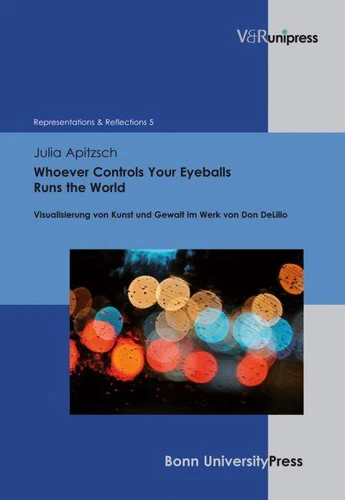Whoever Controls Your Eyeballs Runs the World. Visualisierung von Kunst und Gewalt im Werk von Don DeLillo
Par : , , ,Formats :
Disponible dans votre compte client Decitre ou Furet du Nord dès validation de votre commande. Le format PDF est :
- Compatible avec une lecture sur My Vivlio (smartphone, tablette, ordinateur)
- Compatible avec une lecture sur liseuses Vivlio
- Pour les liseuses autres que Vivlio, vous devez utiliser le logiciel Adobe Digital Edition. Non compatible avec la lecture sur les liseuses Kindle, Remarkable et Sony
 , qui est-ce ?
, qui est-ce ?Notre partenaire de plateforme de lecture numérique où vous retrouverez l'ensemble de vos ebooks gratuitement
Pour en savoir plus sur nos ebooks, consultez notre aide en ligne ici
- Nombre de pages522
- FormatPDF
- ISBN978-3-86234-849-7
- EAN9783862348497
- Date de parution16/11/2011
- Protection num.pas de protection
- Taille3 Mo
- Infos supplémentairespdf
- ÉditeurV&R Unipress
Résumé
The works of Don DeLillo's give a seismographic account of the cultural political situation and offer complex insights into American culture. Julia Apitzsch examines the thematic and aesthetic function of the visual representation of history and cultural reality in DeLillo's novels. DeLillo's portrayals of key events in American history are violent and traumatic. Their visualisation has burned them into the American collective memory.
DeLillo critically examines the mechanisms of power and significance of images and sounds out the various possibilities of creatively reclaiming control through language, by translating the flood of images into literary motifs. Especially traumatic events such as the terrorist attacks of 11th September, which generated an overwhelming torrent of images, show that as an interpreter of images, the author is more important than ever.
DeLillo critically examines the mechanisms of power and significance of images and sounds out the various possibilities of creatively reclaiming control through language, by translating the flood of images into literary motifs. Especially traumatic events such as the terrorist attacks of 11th September, which generated an overwhelming torrent of images, show that as an interpreter of images, the author is more important than ever.
The works of Don DeLillo's give a seismographic account of the cultural political situation and offer complex insights into American culture. Julia Apitzsch examines the thematic and aesthetic function of the visual representation of history and cultural reality in DeLillo's novels. DeLillo's portrayals of key events in American history are violent and traumatic. Their visualisation has burned them into the American collective memory.
DeLillo critically examines the mechanisms of power and significance of images and sounds out the various possibilities of creatively reclaiming control through language, by translating the flood of images into literary motifs. Especially traumatic events such as the terrorist attacks of 11th September, which generated an overwhelming torrent of images, show that as an interpreter of images, the author is more important than ever.
DeLillo critically examines the mechanisms of power and significance of images and sounds out the various possibilities of creatively reclaiming control through language, by translating the flood of images into literary motifs. Especially traumatic events such as the terrorist attacks of 11th September, which generated an overwhelming torrent of images, show that as an interpreter of images, the author is more important than ever.



